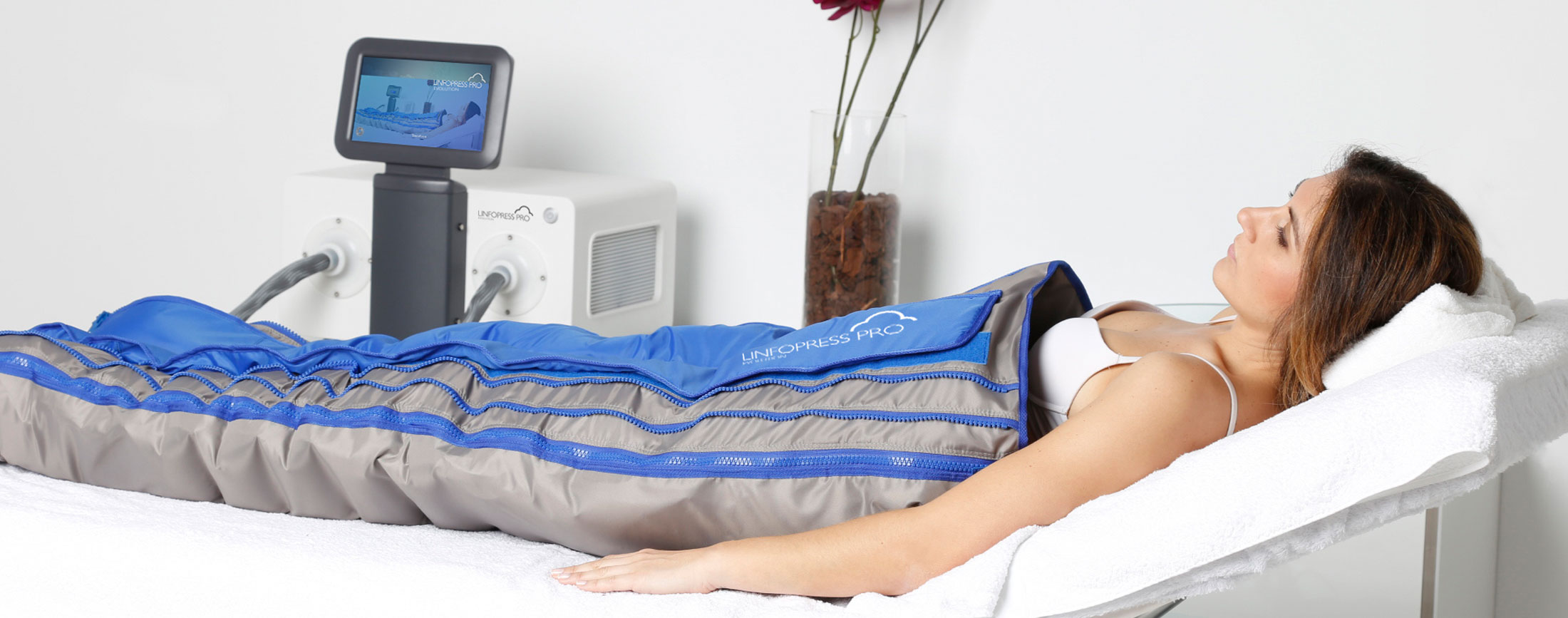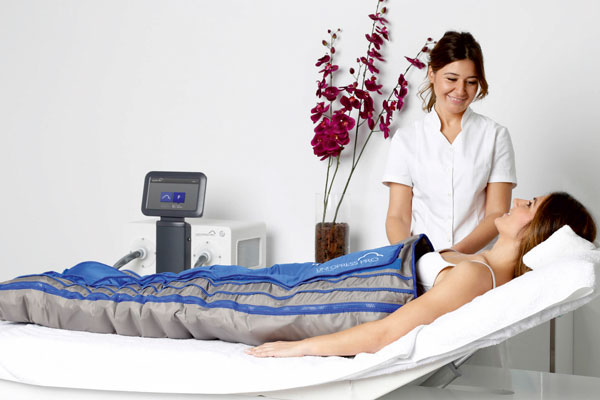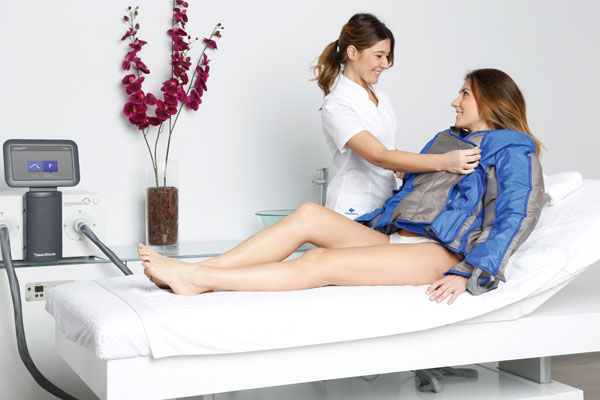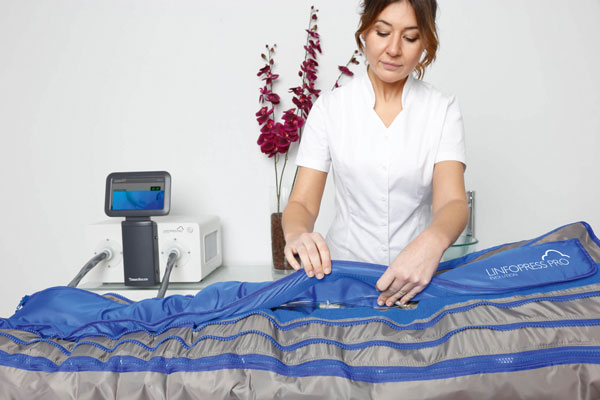
LINFOPRESS EVOLUTION PRO
Understanding Pressotherapy
What is pressotherapy?
Pressotherapy, also referred to as alternate compression therapy or pneumatic compression therapy, is an effective method for improving blood circulation, lymphatic massage, and reducing cellulite. This technique utilizes specialized equipment equipped with inflatable boots or arm sleeves that rhythmically expand and contract.
By doing so, it facilitates the movement of lymph in the lymphatic vessels and promotes blood flow in the veins of the legs or arms, aiding their journey towards the heart. It serves as a mechanized lymphatic drainage technique that targets water retention by applying intermittent compression to specific areas of the body, such as the legs, stomach, and arms.



How does pressotherapy work?
The pneumatic chambers of the boot are effortlessly filled with air through an automated process. The machine has the remarkable ability to generate pressure levels of up to 100mmHg or even 120mmHg. With this impressive strength, the machine automatically adjusts to the patient’s blood pressure, facilitating a thorough and invigorating lymphatic drainage massage throughout the entire body.
This process effectively enhances blood circulation, promoting overall well-being. To further augment the benefits of the treatment, applying a high-quality anti-cellulite cream can contribute to achieving exceptional results.
Thanks to its dual-piece system, Linfopress Evolution Pro provides you with a full body treatment:
– TROUSER FOR THE LOWER THIRD.
– PNEUMATIC JACKET FOR THE UPPER THIRD.


Detox

Activates circulation

No recovery time

Comfortable and painless

